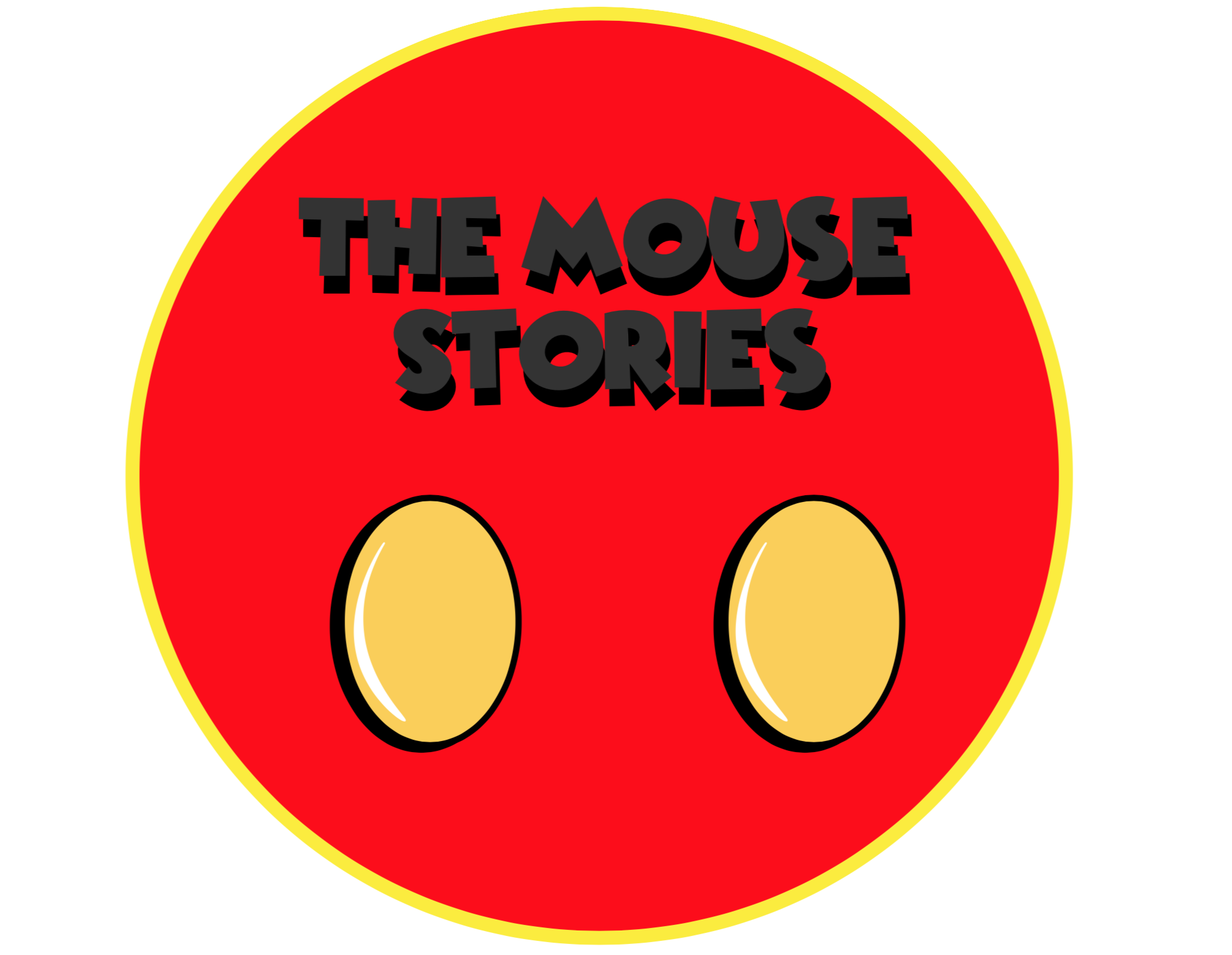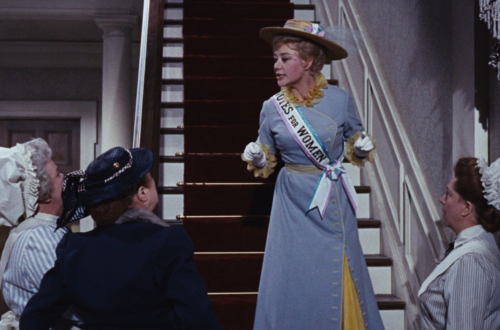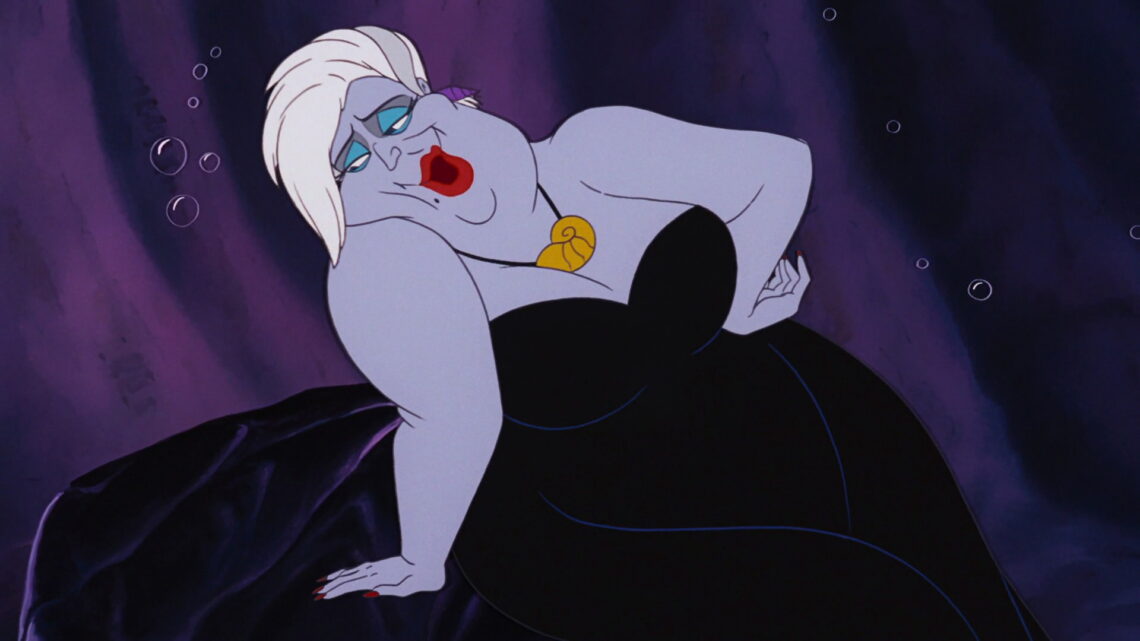
Ursula: The Sea Witch Between Fairytale, Legend, and Myth
There’s no doubt that Ursula is a truly unique sea witch. If someone were to imagine a sea witch without having seen the classic Disney version, they would probably envision something quite different from an enormous half-octopus, half-giant with the appearance of a drag queen and the graceful movements of a silent film diva. (For those who may not know, it’s known that the Disney artists drew inspiration for Ursula from both the drag queen Divine and the movements of the character Norma Desmond in the film “Sunset Boulevard”).
But perhaps that’s precisely the beauty of Ursula: she possesses all the magical and legendary characteristics that a proper sea witch should have, yet at the same time, the skill of the Disney artists was in being able to infuse those very aspects into a container that no one would expect or could imagine.
Yet, from a mythological, fairy-tale, and legendary standpoint, to which figure does Ursula refer? In folklore and ancient stories, who were the real sea witches? And how is the sea witch represented in Andersen’s tale that the classic story is based on?
With today’s article, we delve into Ursula’s lair and attempt to answer precisely these questions!
Who were the sea witches?
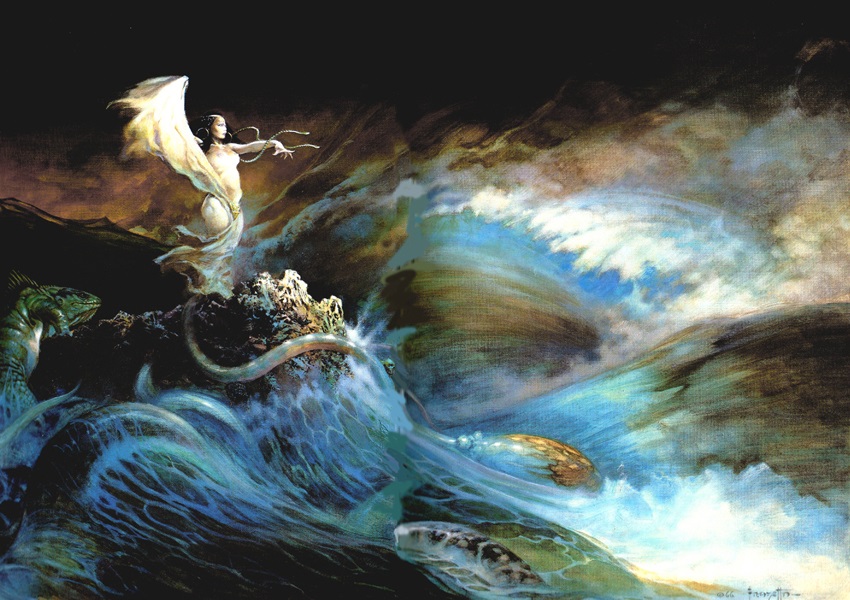
Before delving into Andersen’s fairy tale Sea Witch, it’s crucial to understand who the sea witches were in legends and folklore. Furthermore, before proceeding, if you’re interested in learning more about witches and witchcraft in general, I’d like to direct your attention to two articles where we’ve already discussed these topics, which you can find here and here and here.
Returning to the topic of sea witches, who were these enigmatic women, masters of the sea, the oceans, and the fate of sailors? Well, according to folklore accounts, especially those from the British tradition, which has always been closely tied to the sea, the belief in the existence of sea witches dates back centuries.
It was thought that these witches held not only power over the sea itself but also over the destinies of the men who ventured upon it. Common belief has it that sea witches used to hide along the coastline, ready to curse sailors’ ships, causing them to shipwreck, crash upon the rocks, or worse, sink during furious storms.
Furthermore, these sea witches are often depicted in the form of sirens, creatures that are half fish (if you’d like to learn more about sirens, you can read our articles here and here; it’s all written in Italian but we will translate everything as soon as possible), or even as ghosts, perhaps the ghosts of deceased witches haunting cliffs and seas.
Storm-Calling Witches
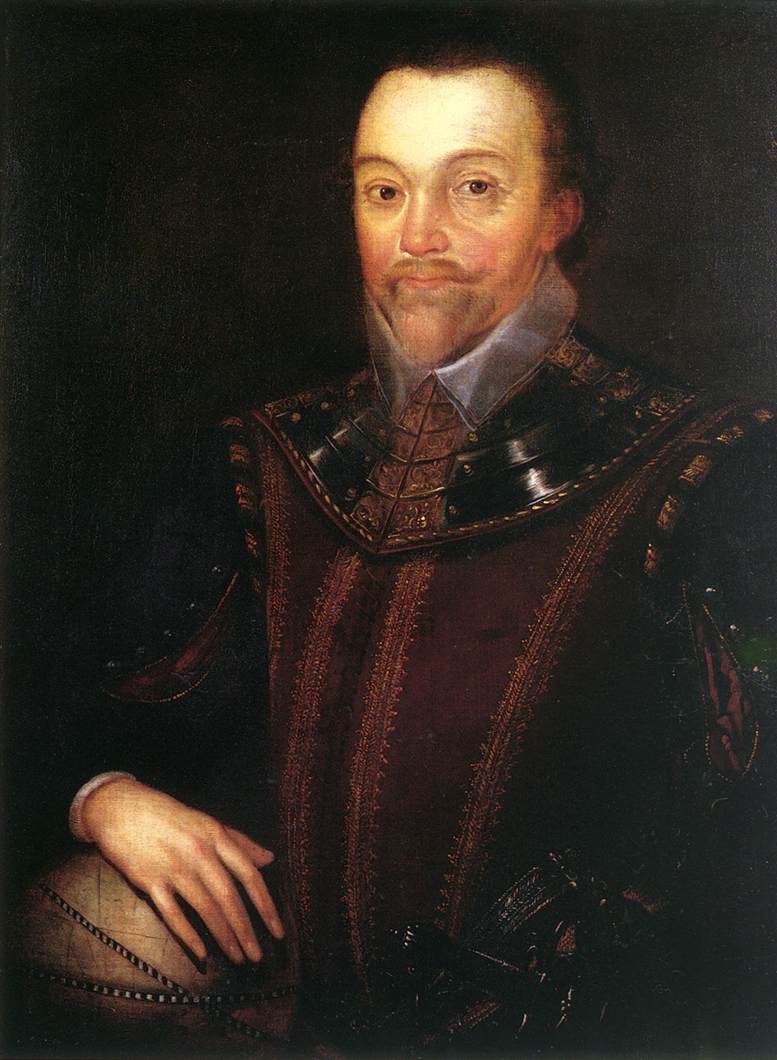
Speaking of storms, one of the things undoubtedly attributed to sea witches is their ability to control the elements and thus unleash dreadful storms and tempests at sea, capable of sinking entire fleets. According to folklore, these witches had the power to manipulate the winds. One method involved tying three knots on a rope or a whip and then untying them one by one to release or control the wind. The skill attributed to witches in terms of elemental control likely has its roots in ancient mythology. In fact, in ancient Egypt, there were spells and formulas believed to raise winds and conjure storms against enemies. Over time, this also led to many episodes of collective hysteria.
During the Middle Ages and the Renaissance, many natural disasters were attributed to witchcraft, including storms at sea. In this context, one of the most famous storms attributed to witches is related to the North Berwick witch trials, which took place in Scotland between 1590 and 1591. During this episode, individuals were accused of witchcraft and using magic to create a storm at sea in an attempt to sink the ship carrying King James I and his wife Anne, who were returning from Denmark.
Another well-known legend concerns the English corsair, navigator, and politician Sir Francis Drake.
First and foremost, because Drake was an exceptionally skilled naval commander, many of his enemies believed he practiced witchcraft and consorted with the Devil. One of the most famous stories narrates that the Devil himself sent sea witches to assist him in defeating the Spanish Armada in 1588. According to the legend, these witches still haunt the site of the battle to this day.
Sea Witches in Folktales and Folklore
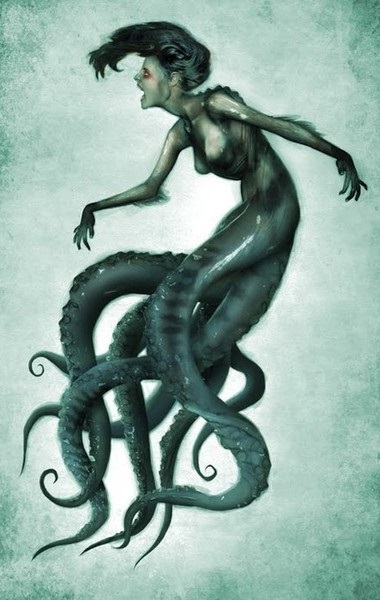
Needless to say, countless stories speak of witches haunting the sea’s waves, seeking revenge against those who dare challenge them.
In Cornwall, just to provide an example, tales and legends revolve around the figure of the Fraddam witch, in a village located to the west of Cornwall. The stories tell of a witch, believed to be the most powerful in the area, who delighted in tormenting anyone who dared venture away from the coastline. She would conjure up tremendous storms, fog, and mist. Even today, the tales suggest she can be spotted, perhaps floating up and down the sea in her very own coffin serving as her boat.
Other legends in folklore speak of witches who were known to cast live cats into the sea as sacrifices (poor cats!) to provoke horrendous storms.
Sea Witches, Deities, and Sea Spirits in Mythology
Even in mythology, there is no shortage of witches or similar entities capable of controlling the elements and the sea, which likely greatly influenced the tales and legends of folklore.
One example is that of the Muireartach, also known as the Sea-hag. Muireartach originates from Celtic mythology and is depicted as a bald (or, according to some sources, white-haired) witch with blue skin, a single eye, and rotten teeth. In mythology, she was the embodiment of the stormy sea and was killed by the hero Fionn MacCumhail, a warrior in Celtic and Irish mythology. According to the myth, the only way to kill her was to drown her in calm waters or bury her in the ground up to her shoulders.
Not only are there ugly and bald women in mythology, but there are also examples of spirits, deities, and creatures that are half-fish and half-human. In Slavic mythology, for instance, there’s the Vodyanoy, a shapeshifting water spirit, who sometimes takes the form of an old man, other times that of a giant frog or fish. It’s said to dwell at the bottom of the sea or in rivers and enjoys drowning unsuspecting sailors or dragging them to its underwater abode to make them its slaves.
In Yoruba mythology in Nigeria, there’s Oyá, also known as Insa, a semi-deity capable of controlling winds, lightning, tornadoes, hurricanes, and storms. In Norse mythology, there’s the Havsrå, a water spirit of the seas, portrayed as a seductive female figure (as often is the case) with long hair that she combs during high tide. The Havsrå not only controls the waves and winds but sailors often offer her food and coins to appease her and secure safe passage through her domains.
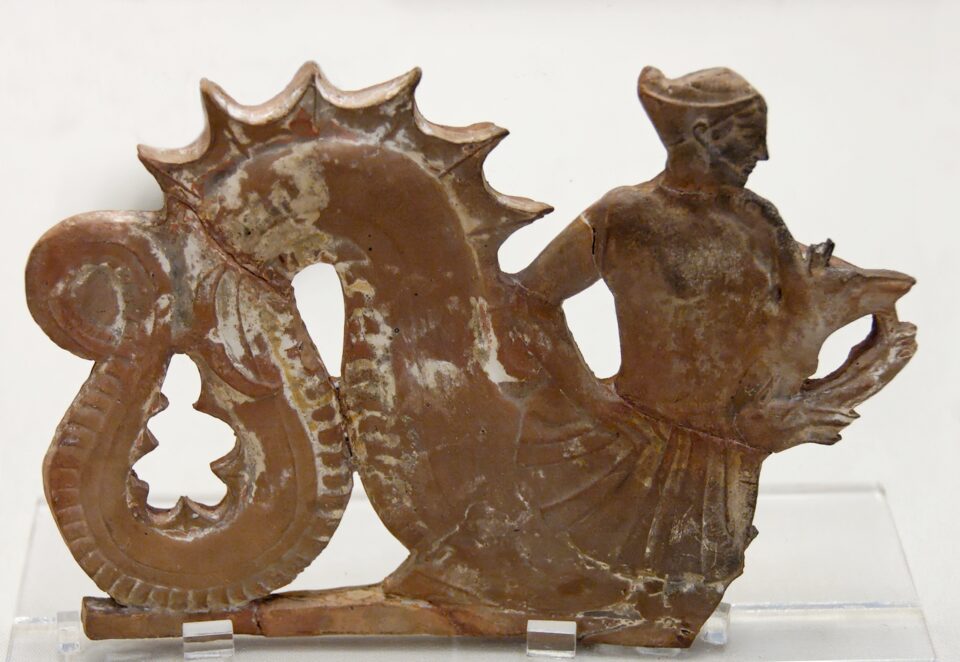
In Greek and Roman mythology, the examples abound as well. Besides the well-known sea god Poseidon, to stay within the feminine theme, there are the Nereids, the tranquil sea deities in Greek mythology, daughters of Pontus and Gaia, and therefore sisters of Ceto, the sea monster slain by the hero Perseus. Lastly, staying on theme, one cannot omit to mention Scylla, the sea monster of the Strait of Messina, who according to myth, was originally a beautiful maiden transformed into a creature with the upper body of a woman and the lower body of a fish, with heads resembling those of serpents and ravenous dogs, by Circe (or according to other sources, by Amphitrite).
The Sea Witch in Andersen’s Tale and Ursula
Last but not least, we can’t forget to mention the Sea Witch portrayed by Hans Christian Andersen in the story that inspired the classic Disney movie.
In Andersen’s fairy tale, the Sea Witch is depicted as a powerful and enigmatic figure, with an unsettling appearance. She is described as a sorceress thirsty for wealth and knowledge, embodying a blend of witch and unscrupulous businessperson. She engages in dealings with both marine creatures and humans, offering them spells and potions in exchange for their treasures, be they material or immaterial. She commands fish, sea monsters, and various creatures in her service, dwelling in a dark underwater realm filled with grayish sand, where the sea is deep and dark blue. At the border of her domain lies the Boiling River, composed of whirlpools and eddies, beyond which lies a flat marshland with bubbling geysers. In essence, a sort of underwater Mordor. The closest resemblance to the classic version is Andersen’s description of a forest made of shrubs that are half plants and half octopi, much like the initial scene in which Ariel seeks out Ursula, surrounded by seaweed that is transformed creatures by the wicked witch. In comparison, Andersen’s sea witch, though not explicitly depicted as a true antagonist, is far worse than Ursula, who almost seems like a jealous and vain old diva by comparison.
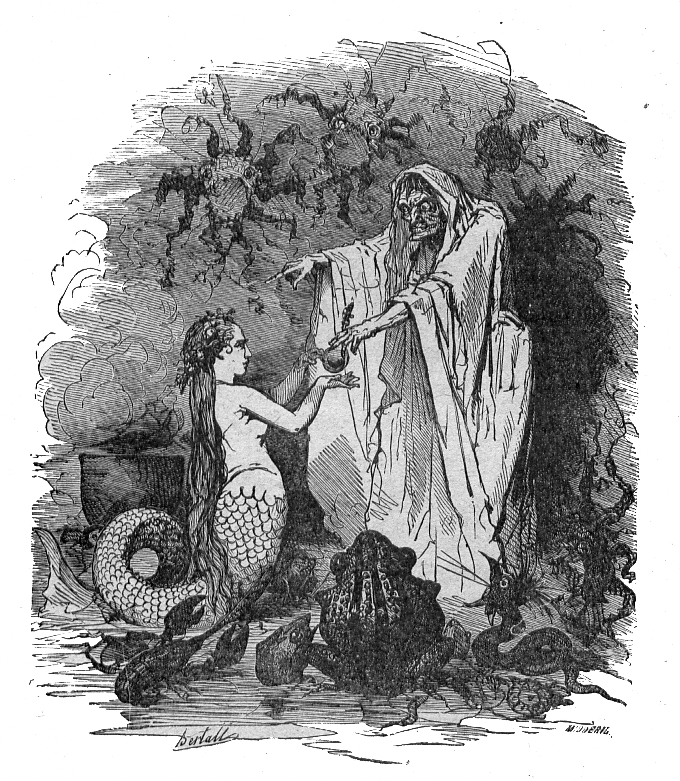
This is evident in what the Sea Witch offers the unfortunate little mermaid. In the fairy tale, the witch sells the mermaid a potion that grants her legs in place of her tail, allowing her a chance to win the love of the prince she’s infatuated with. So far, it’s a familiar story. However, the horrifying aspect is that the Sea Witch gives her the potion in exchange not just for her voice but, unlike Ursula, far more dramatically: she cuts off the mermaid’s tongue. Moreover, to make her life even more difficult, she predicts that the mermaid will have legs like humans, but walking will be excruciatingly painful as if she’s being pierced by sharp knives. Furthermore, not only can she never become a mermaid again, but if she fails to win the prince’s heart and he marries another, she will die of heartbreak and turn into sea foam. It’s safe to say that dear old Ursula, all things considered, was quite lenient with Ariel.
Needless to say, Andersen’s Sea Witch isn’t half octopus-like Ursula. The appearance of the latter was influenced by multiple factors, as mentioned earlier. Moreover, as seen throughout, mythology and folklore are filled with half-monster and half-human beings, featuring tentacles, tails, and so on. In this light, Ursula’s representation isn’t surprising at all. It gives her a distinctive and special touch that helps solidify her as one of the best villains in the entire Disney Pantheon. With that said, we’ve reached the end of our brief journey into the maritime realms of sea witches!
If you enjoyed the article, let us know by commenting or sharing it on our social media channels!
Sources:
- The Encyclopedia of Witches, Witchcraft and Wicca, Rosemary Guiley – Facts On File
- Popular Romances of the West of England, Robert Hunt
- The Witch-Cult In Western Europe, M. A. Murray
- Encyclopedia of Fairies in World Folklore and Mythology, Theresa Bane
- https://alchetron.com/Sea-witch-(mythology)
- https://fairytale.fandom.com/wiki/Sea_Witch
- http://www.paroledautore.net/fiabe/classiche/andersen/sirenetta.htm
- https://www.treccani.it/enciclopedia/nereide/
- https://www.ronelthemythmaker.com/secretive-sea-witches-folklore/
- https://www.history.com/news/10-things-you-may-not-know-about-francis-drake
- https://www.historic-uk.com/HistoryUK/HistoryofScotland/North-Berwick-Witch-Trials/
- https://www.sacred-texts.com/neu/eng/prwe/prwe177.htm
- https://beyondthedreamline.wordpress.com/2019/08/01/year-of-the-witch-the-witch-of-fraddam/
- https://apiedinudi.blog/nella-tradizione/
- https://www.treccani.it/enciclopedia/ceto_res-759cb304-962a-11de-baff-0016357eee51/
- https://www.treccani.it/enciclopedia/scilla_res-1482d139-edc2-11df-9962-d5ce3506d72e/
- https://www.ilsuperuovo.it/ursula-la-strega-del-mare-oggi-vediamo-perche-assomiglia-ad-un-polpo


